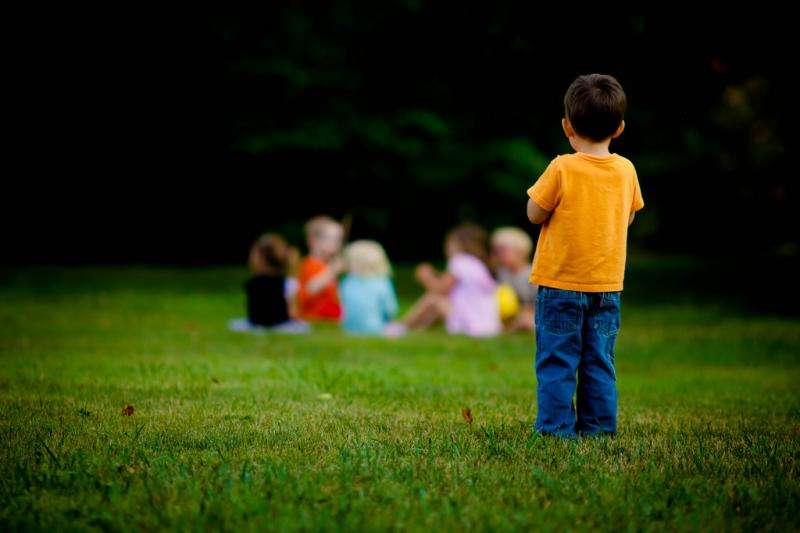Why children exclude each other—helping kids open up about being left out

It can be heartbreaking to feel like an outsider – particularly when you're a kid.
But University of Toronto researchers are developing a tool they hope will provide new insights into why children exclude each other, and what they think about life both inside and outside of the circle of inclusion.
"Children and adults face exclusion and inclusion every day," says associate psychology professor Tina Malti. "Children might exclude one another for a variety of reasons, such as gender, ethnicity or a developmental issue."
It can be used as a bullying technique, or for practical reasons, such as a limited birthday party guest list.
"It can begin as early as the preschool years, and it continues and changes as we grow," the U of T Mississagua researcher says. "It's important that we understand how children are understanding and dealing with this issue."
Previously, researchers studied exclusionary behaviour by presenting hypothetical situations to children who were questioned about how they might respond to the situation, and asked to guess how their peers might feel and act. According to Malti, this technique presents some challenges.
"The hypothetical scenarios are removed from the children's everyday experiences, so they can't always easily relate to them," she says. Researchers must also tread lightly with the feelings of their young subjects. "Many children experience exclusion on an everyday basis, and don't want to revisit extremely negative memories of past experiences," she says.
Malti was recently awarded funding from the Social Sciences and Humanities Research Council to create a new tool for studying children's experiences with peer inclusion and exclusion.
Her team at UTM's Laboratory for Social-Emotional Development and Intervention will interview 60 children, aged five to 15, about their experiences with peer exclusion. The interviews will be catalogued in a library of video clips and stories to be used in place of the hypothetical situations previously presented in research interviews.
"We will let the children tell us what they experience on an everyday basis, about times they were excluded and times they excluded others," Malti says. "The children will be the story tellers."
Researchers will be able to use the new catalogue of stories when investigating children's experiences with exclusion. It is hoped that using real stories, instead of hypothetical situations, will make the content more relatable to children and encourage more accurate responses from subjects about their own experiences.
Malti says that understanding how children use and react to exclusion will help educators and parents find better ways encourage inclusivity.
"There's clear evidence that inclusion of children who are different promotes tolerance and pro-social attitudes, and an openness to experience with people who are different from us," Malti says. "The more diverse our societies become, the more important it becomes to include those who are very different from us."


















